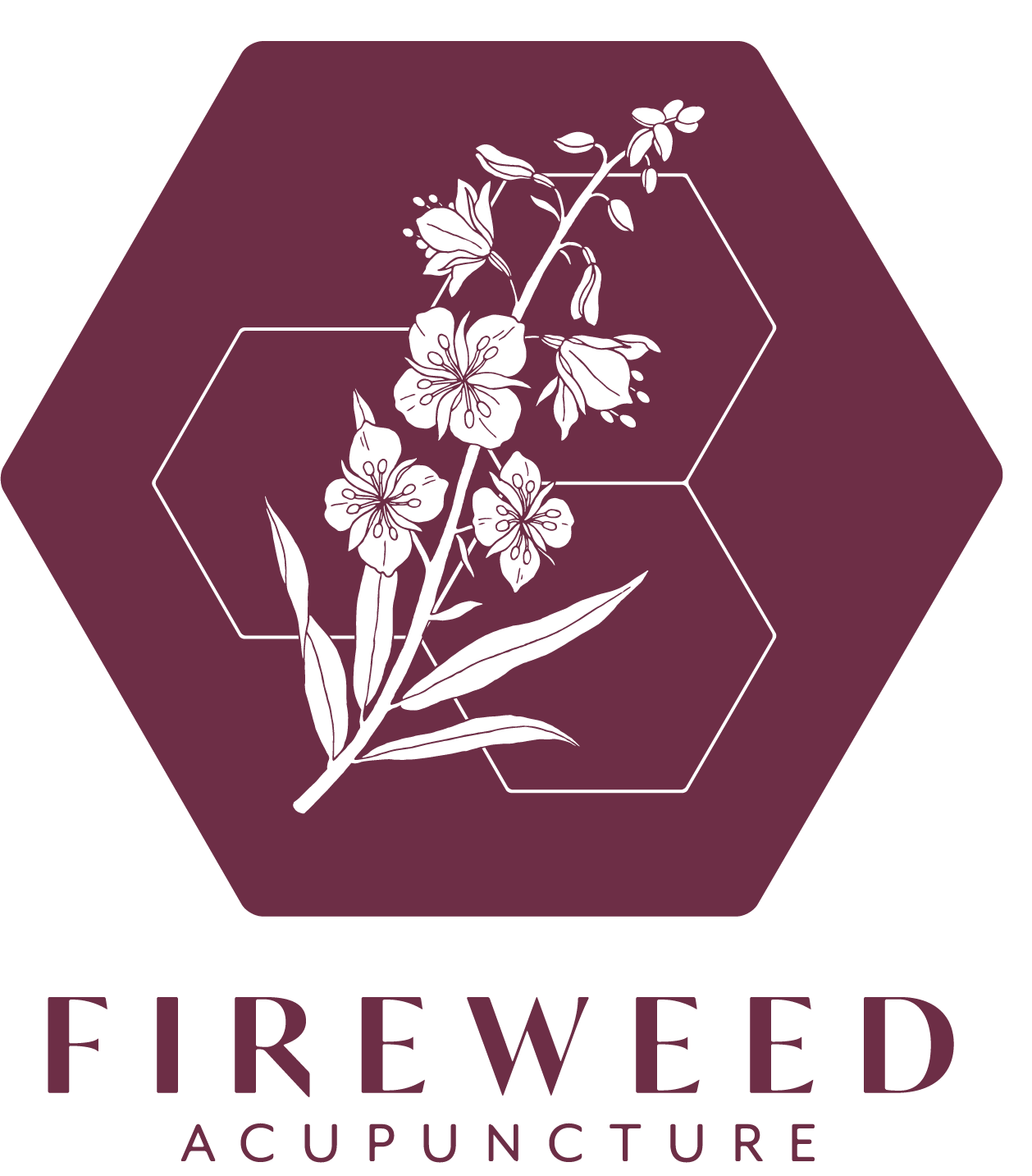FAQ: Acupuncture and Dry Needling - What’s the Difference?
I am often asked what the difference between acupuncture and dry needling is. I’ll say right up front - this is a hot issue in both acupuncture and physical therapy (providers who do dry needling) fields, with a lot of opinions on each side. But, as patients, the important things to know are what each technique is and how each can help you! My hope with this entry is to clear up some confusion and answer some common questions.
My priorities with patients are always 1) safety and 2) results. So, regardless of the provider or what they practice, if they are being safe and you are noticing improvement, that is what is most important. But, there’s a lot more to consider on the topic!
(To be clear: this is my stance on the topic! Other acupuncturists may feel differently. There are a lot of nuances, some of which I tried to explain here, but there is always room for disagreement! Feel free to reach out with other questions you have.)
Quick background on acupuncture
Chinese and East Asian medicine is a complete system of medicine that evolved over time in China and East Asia. This means acupuncturists use their own system of diagnosis and treatments can include using needles, but also many other modalities (such as cupping, gua sha/dermal friction, tui na/Chinese medical massage, moxa, heat therapy, dietary therapy, etc.). So, when you visit an acupuncturist and tell them you have a Western medical diagnosis, they will ask you many (many!) additional questions to decide what your Chinese medicine pattern, or diagnosis, is. For example, diabetes can be many different diagnoses in Chinese medicine - it will depend on what symptoms you are experiencing. This also means that your acupuncturist is treating your whole person - both your main concern (likely pain, if you’re seeking dry needling!), as well as the root cause that led to the pain in the first place.
Additionally, Chinese/East Asian medicine uses meridians or channels for hands-on treatment. Channels are pathways that run from head to toe in the body that connect specific points. In Chinese, the word for meridians/channels is jīngmài 经脉. Jīng 经 can also mean warp (as in the vertical strands in weaving) or longitude, and mài 脉 can mean arteries, veins, and vessels. Knowing this, you can understand a bit more about how meridians are viewed in Chinese medicine - like the support structure that holds up the body (warp), that run up and down (longitude), and act like vessels (for Qi and Blood, but that is another discussion!). Learning these channels, points, and how to use the points for the diagnoses is a big part of the education that Licensed Acupuncturists receive. (And yes, this is the quick background!)
How are acupuncture and dry needling similar?
Acupuncture and dry needling both use filiform needles (meaning the needles are thin and aren’t hollow).
Both practices insert needles into specific parts of the body.
Both practices can be used to treat musculoskeletal conditions.
What are the differences between acupuncture and dry needling?
Under Iowa law, acupuncture can only be performed by Licensed Acupuncturists, MDs/DOs, chiropractors, dentists, and podiatrists. So, by law, physical therapists aren’t providing acupuncture. Physical therapists are also not using Chinese medical theory when choosing points to dry needle, and instead rely only on Western musculoskeletal knowledge.
In addition to putting needles in areas that are painful, Licensed Acupuncturists insert needles in specific points along acupuncture channels (discussed above). Acupuncturists use what are called ashi points, or painful/tender/ouch points, on the body (similar to trigger points). Hands-on treatments like tui na use both musculoskeletal knowledge and meridians/channels, on the body. After the needles are inserted, they may be stimulated (by moving the needle or with an electric current), and then they are left in place for a period of time while you rest.
Licensed Acupuncturists are required to have extensive safety training and pass a certification called Clean Needle Technique, which describes the precautions and safety measures acupuncturists need to take to avoid patient injury, reduce risk of infections, etc. Examples of these safety measures are training on areas of the body to be cautious with needling and sanitary ways of using needles (such as not reusing needles in multiple places on the body). This certification includes a class, written test, and hands-on test demonstrating correct Clean Needle Technique. Acupuncturists are the only profession providing acupuncture/dry needling that receive such extensive training on safety and cleanliness for acupuncture treatments.
Licensed Acupuncturists are regulated by the Iowa Board of Medicine and have to meet minimum education requirements (3-year graduate degree), pass three national board exams, and complete 60 continuing education credits every 4 years. Anyone calling themselves a Licensed Acupuncturist in Iowa must meet these minimum requirements. (These requirements do not apply to other providers also legally allowed to provide acupuncture, including chiropractors.)
Dry needling is not regulated in the State of Iowa and there is no standard for training/education that physical therapists must meet in addition to their PT license before they can provide dry needling to their patients. Dry needling is typically offered by physical therapists; however, it is within the scope of practice for acupuncturists (and others who can provide acupuncture, like doctors and chiropractors). Dry needling is a skill that requires training to provide it effectively and safely. Because dry needling is not regulated, it is difficult for patients to know what level of safety and skill training their provider has received!
Dry needling inserts needles into the skin or muscle to target trigger points, or specific spots in a muscle that is sensitive and may be causing you pain. The needle is then aggressively stimulated (typically moving the needle in or out of the skin/muscle, often rapidly, or with an electric current) to produce a response (often felt as a muscle “twitch”). Dry needling relies on Western musculoskeletal knowledge and does not use channels/meridians or Chinese medical theory.
It can be easier to have insurance cover your dry needle treatment because dry needling is performed by physical therapists (who are often already in-network with insurance providers). Acupuncture is not currently covered by major Iowa health insurance companies.
Do acupuncture and dry needling work?
People often report success with both forms of treatment, depending on their condition!
Dry needling treats musculoskeletal conditions. Acupuncture can also successfully treat many musculoskeletal conditions and has done so for thousands of years.
Acupuncture also looks for the underlying systemic reason for your pain, and works to treat that, so that the pain doesn’t reoccur.
You can receive additional treatment methods under the Chinese medicine umbrella, such as cupping, tui na (Chinese medical massage), gua sha (dermal friction), etc. to complement your acupuncture treatment.
Along with your dry needling, your physical therapist will likely provide additional services, including exercises to do at home!
Acupuncture can treat additional concerns outside of musculoskeletal pain, such as problems with digestion, headaches, and menstrual problems - and may even view these concerns as connected to your physical pain, too! Dry needling doesn’t do this.
How should I pick out a provider for my treatment?
It can be hard for a consumer to know what to look for when evaluating a new practitioner! The following suggestions are a good starting point and apply to all practitioners - acupuncturists, physical therapists, and other providers performing acupuncture.
Look for providers who are upfront about their training! Some questions you can ask include: What training courses have they taken? How many hours of training do they have? Where did they receive their training? Was it hands-on or lecture only? Have they continued to get training, or was their last course a long time ago? How often do they do acupuncture/dry needling? This information should be on their website, but if not - contact them and ask! (This includes me!)
Is what you are asking your provider to do within their scope of practice and training? This can often be hard to evaluate as a patient, but follow your gut and don’t be afraid to ask questions.
In the office, look for a sanitary setting. Some things to look for:
The practitioner should wash or sanitize their hands prior to touching needles, and should re-sanitize their hands if they have touched other objects (doorknobs, computers, etc.) in the meantime.
There should be a (red) sharps disposal container readily accessible.
Your skin should be clean, and possibly sanitized with alcohol swabs, in the area before a needle is inserted.
A new pack of needles should be opened for each patient.
They should not reuse needles for multiple areas of your body.
The supplies should be kept in a clean, organized area that appears sanitary (not surrounded by trash, previous patient’s supplies are not present, etc.)
Once a needle is taken out of your body, it should promptly be put in the red sharps container.
Things to keep in mind:
Your treatment doesn’t have to hurt for it to work. This applies to any treatment you receive - massage, acupuncture, dry needling, chiropractic care, etc. Pain doesn’t necessarily mean success, and you can achieve results without it needing to be painful.
On the other hand, acupuncture isn’t necessarily pain-free! You may feel moments of discomfort or short-lived pain. Your acupuncturist (whoever it may be) should be open with you on what to expect, and you should communicate with them if what you’re feeling is uncomfortable.
If you experience anything weird or uncomfortable after your treatment - especially shortness of breath, long-lasting pain, pain where you didn’t experience it before, and/or unexpected bleeding (such as in urine) - reach out to your provider or primary care provider immediately. If you’re not sure and can’t reach your normal providers, head to Urgent Care or the ER. Injury is possible from both dry needling and acupuncture, so it is important to take these symptoms seriously if you experience them.
You sound pretty biased. Are you against dry needling?
It depends. As I mentioned in the beginning, I am focused on safety and results. If you have a physical therapist that you’re seeing who safely performs dry needling that gives you results? Then I support that. But I do get frustrated when people (and not just physical therapists!) are providing care they aren’t trained for, or making claims for their treatment that are outside their scope of practice, which often leads to disappointment (or worse, injury) for patients. This is something that is important for all practitioners to keep in mind.
And yes, I am also a bit biased. I think Chinese/East Asian medicine deserves to be honored as a whole, and taking pieces out of it - especially by removing the philosophy and theory that it is based on - is disrespectful to the traditions and cultures that developed it. Is it possible to honor these traditions while still practicing dry needling? I think it could be! For starters, this can look like being respectful and acknowledging that the roots of dry needling are from Chinese/East Asian medicine and not dismissing Chinese/East Asian medicine as out of date or irrelevant.
So why is this such a controversial topic?
I definitely waded a bit into controversial territory with this entry, but my intention isn’t to make anyone mad. My true purpose is to educate patients on the services they are receiving, regardless of who it is from.
I always strive to stay within my scope of practice and training and will be honest about what I can, can’t, and shouldn’t treat. With that in mind: I do not provide dry needling, in the sense that physical therapists do, though I have received some training on it. But, I do treat musculoskeletal concerns! (Often!) I also can treat a wide range of concerns that aren’t musculoskeletal.
Still have questions? Feel free to reach out and I will do my best to answer them!





